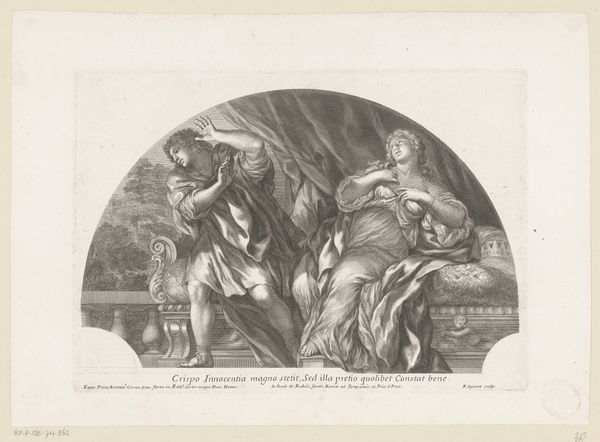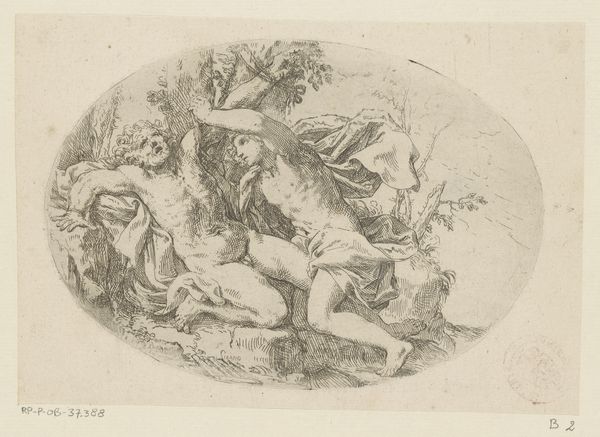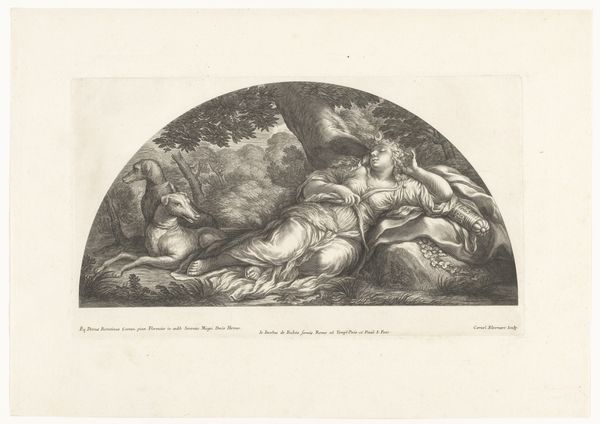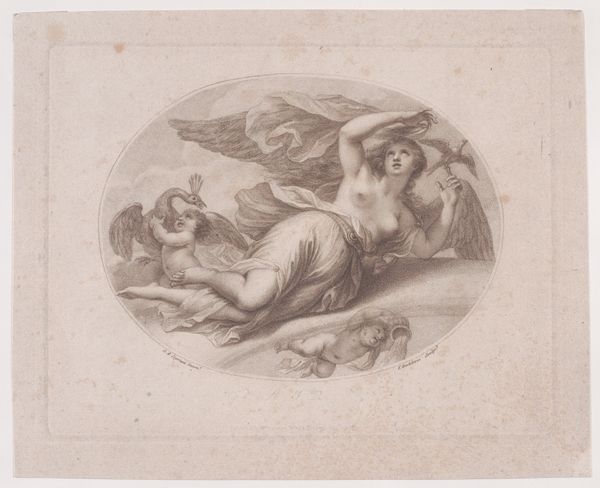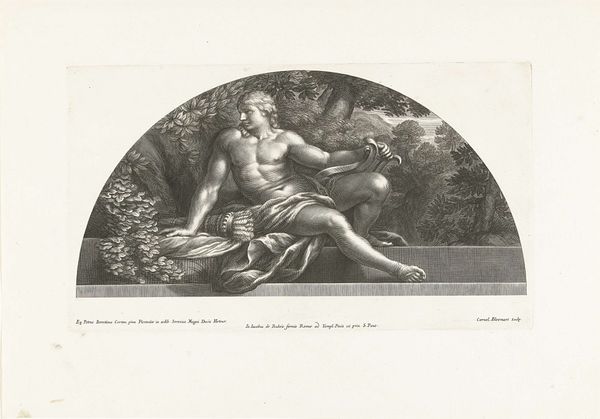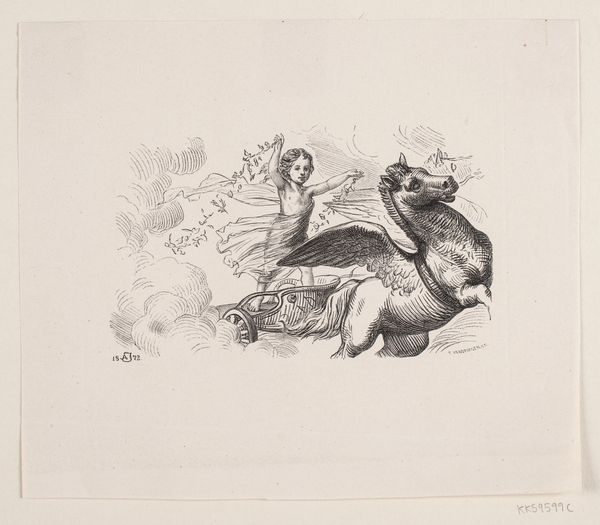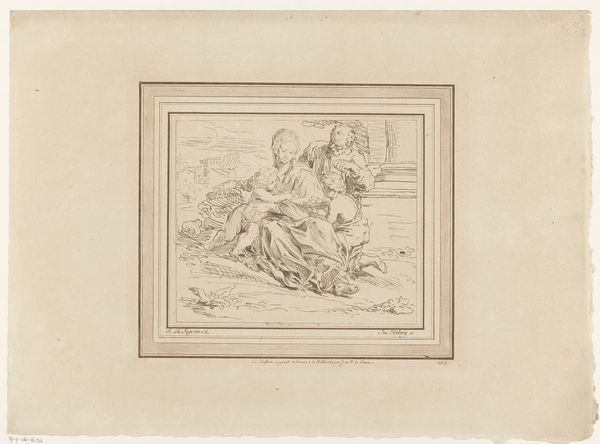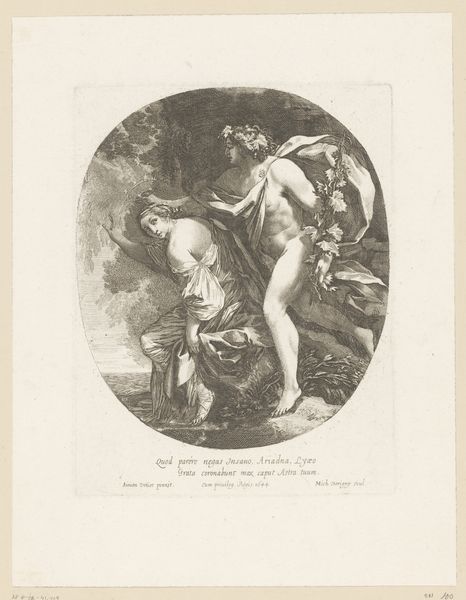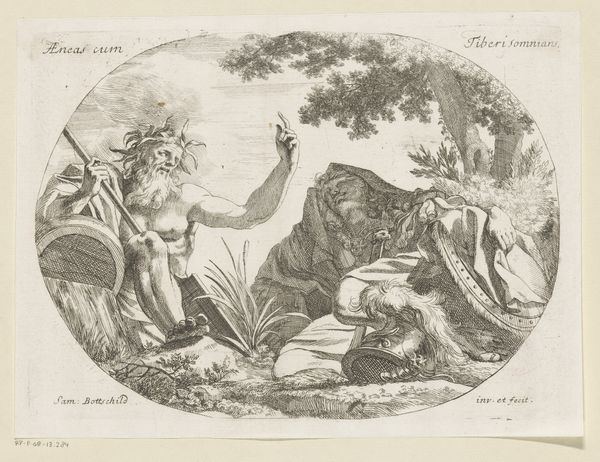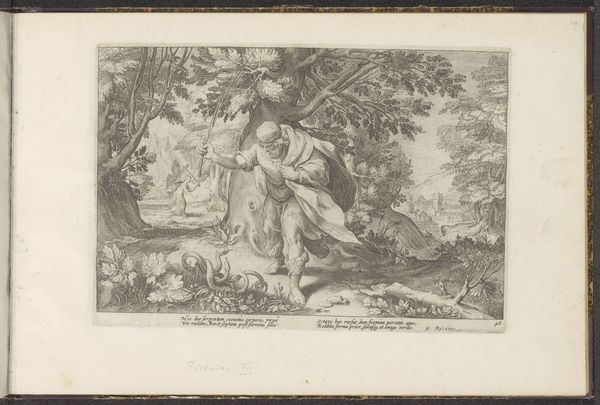
print, engraving
#
allegory
#
baroque
# print
#
landscape
#
charcoal drawing
#
figuration
#
history-painting
#
engraving
Dimensions: height 214 mm, width 339 mm
Copyright: Rijks Museum: Open Domain
Pierre Simon created this engraving of the Flying Mercury in the late 17th century. It’s an image that reveals the social and institutional context in which art was produced. Mercury, the Roman messenger god, is shown from the back, in flight, holding his caduceus. Note the classical architectural fragment, obelisk, and the billowing drapery – these are all visual codes that signal power, knowledge, and divinity, aligning with the cultural values of the time. 17th-century Europe, particularly France, experienced the rise of absolutist monarchies who used classical imagery to legitimize their power. The Roman gods, symbols of imperial authority, became fashionable motifs in art and architecture. Institutions like the French Royal Academy played a key role in standardizing artistic taste and promoting these ideals. As historians, we examine not just the image, but also the socio-political landscape in which it was created, using resources like period texts and institutional records to gain a deeper understanding. Art like this tells us much about the relationship between power, culture, and visual representation.
Comments
No comments
Be the first to comment and join the conversation on the ultimate creative platform.
